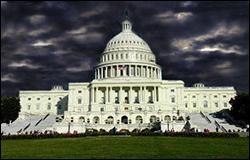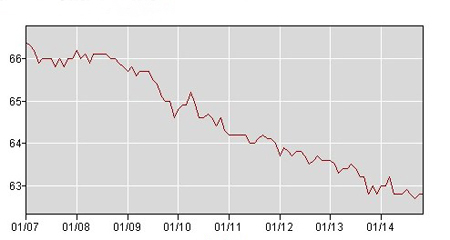By Pam Martens and Russ Martens: December 11, 2014
 Just as a business succeeds or fails on the basis of trust by its customers, it can also be said that a nation succeeds, over the long term, through the trust and confidence of its citizens. There are now ample warning signs that America is dangerously heading in the wrong direction.
Just as a business succeeds or fails on the basis of trust by its customers, it can also be said that a nation succeeds, over the long term, through the trust and confidence of its citizens. There are now ample warning signs that America is dangerously heading in the wrong direction.
As income and wealth inequality in the United States have set records, Americans’ are acknowledging their awareness that this could not have happened without the willful participation of key institutions and leaders.
Historic record lows were set at various times this year in polls measuring Americans’ trust in Congress, approval of President Obama, confidence in the Supreme Court, faith in media, and the popularity of the Democratic party – the party commonly seen to care about leveling the playing field for the little guy. This alarming level of cynicism on the part of citizens can have wide-ranging impacts on everything from consumer spending to worker productivity to volunteerism and voter turnout. In essence, it has a shriveling effect on participatory democracy and the economic well being of the nation.
In a poll released by Gallup on June 30 of this year, Americans’ confidence in the U.S. Supreme Court reached an all-time low of 30 percent. At the same time, confidence in Congress set a record low of 7 percent while President Obama’s confidence rating reached the lowest point of his presidency, at 29 percent, down from an approval rating of 51 percent in 2009 during his first year in office and the worst economic crisis since the Great Depression.
On June 19, 2014, Gallup released a media poll which found that Americans’ trust in television news had recorded an all time low of 18 percent; trust in newspapers for news tied its prior record low of 22 percent; and faith in the internet for news was hovering just slightly below its 1999 level at 19 percent – one percentage point higher than television news.
On November 12, just after the midterm elections which handed control of both houses of Congress to Republicans, a Gallup poll showed that a record low 36 percent of Americans say they have a favorable opinion of the Democratic party, marking the first time since September 2011 that the Republican party had a higher favorability rating, at 42 percent, than the Democratic party.
New records are also being set in U.S. economic readings which show a rudderless nation at best and a nation heading toward a precipice at worst.
According to the Bureau of Labor Statistics, the Labor Force Participation Rate, which measures the share of adults who are working or actively looking for work, has been setting lower lows since the start of the Great Recession and now stands at only 62.8 percent. One often-heard theory for this is that more Baby Boomers have opted for retirement and thus are no longer counted in the labor force. That theory is hard to correlate with the fact that a low participation rate exists for 25-to-54 year olds as well.
While the official unemployment number has been improving, the government is only counting people who are actively looking for work in that figure. The drop in the labor force participation rate accounts for almost the entire improvement in the unemployment rate over the past five years.
The data behind the payroll numbers for November were also telling: 2.8 million people had been out of work for more than six months, representing 30.7 percent of the unemployed, while 6.9 million individuals were working part-time because they couldn’t find a full time job.


